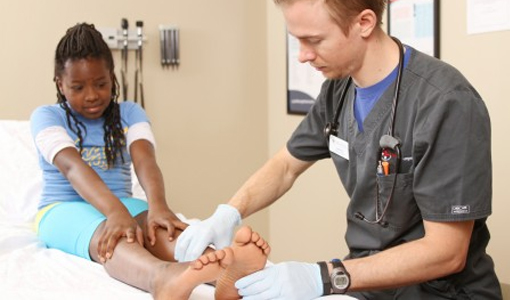Fractures & Broken Bones
Fractures and broken bones always require immediate medical attention. Treatment depends on the location and the seriousness of the break. If you suspect you have a fracture, stop by a ZipClinic as soon as possible!
Types of Fractures
There are four common type of bone fractures:
- Stable fracture: The most simple type of fracture because the bone is broken but has not moved out of place. On an x-ray, a stable fracture looks like a line, often with no space between the sections of bone
- Hairline fracture: Also known as “partial fractures,” hairline fractures don’t completely break or separate.
- Compound fracture: Also known as a open compound fracture, these breaks are more severe with the skin broken along with the bone. Sometimes the bone will break through the skin, but not always.
- Comminuted fracture: Since the bone breaks into three or more pieces, this type of fracture often require surgery, sometimes needing the use of metal screws to rejoin the bone.

Symptoms or Signs of Fractures
The first and most obvious symptom is pain. If a bone is broken, you can no longer put pressure on the area, or perhaps only partial pressure. However, any pressure causes intense pain.
Fractures also cause swelling, bruising and occasionally bleeding (especially with compound fractures). Fractures near a joint might also restrict movement of that joint.
If the pain is very intense, you may also look pale, feel dizzy or even faint, especially with fractures of the femur or pelvis.
Many doctors can determine if a bone is broken by examining or touching the area, but require x-rays to confirm the diagnosis. An x-ray will also illustrate the type and extent of the fracture to aid in treatment decisions.

